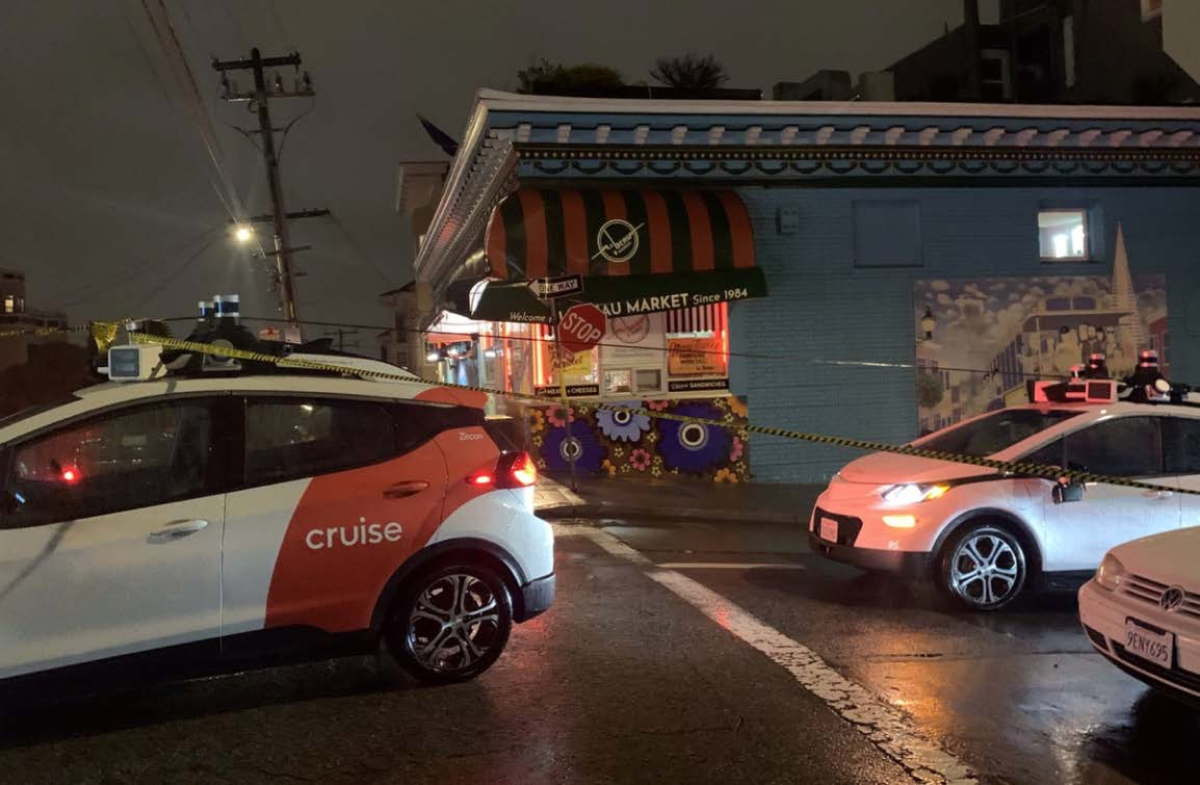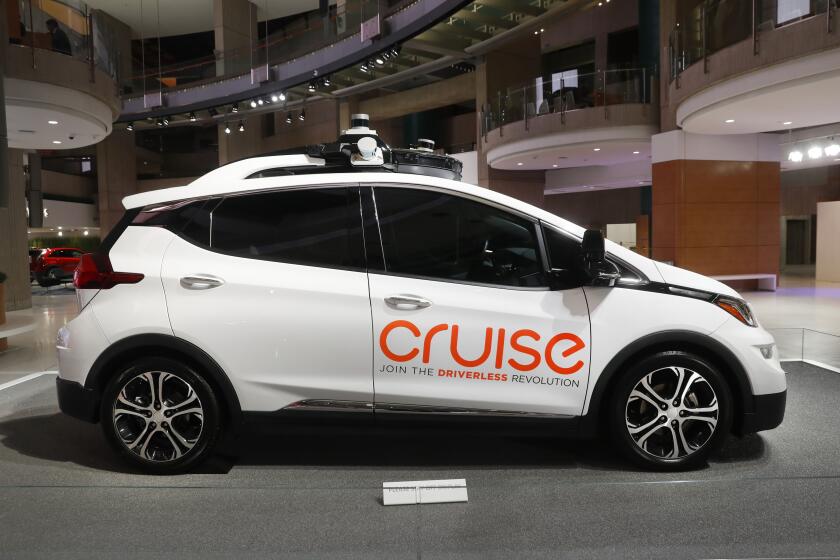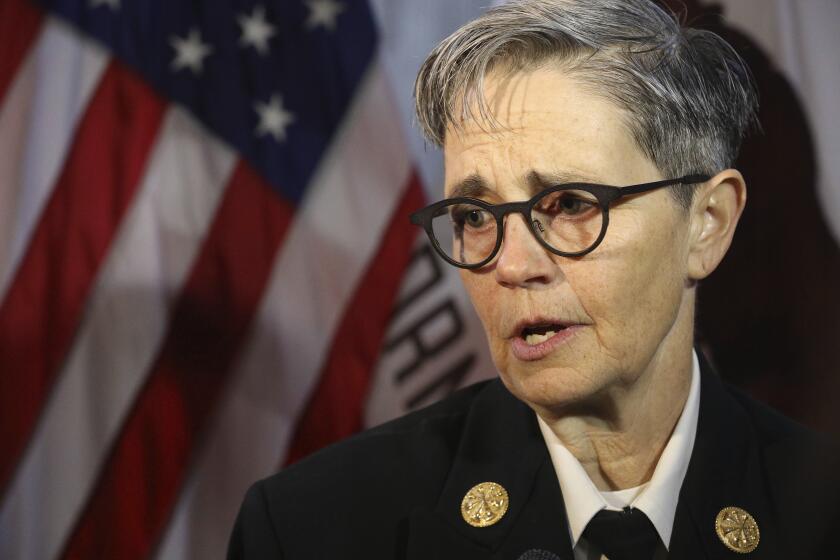After disturbing week for Cruise robotaxis, state applies the brakes

- Share via
It was a week of robotaxi mayhem in San Francisco for the Cruise driverless car company — by turns bizarre, comic and alarming.
As a result, the California Department of Motor Vehicles said Friday it’s investigating “recent concerning incidents” involving Cruise vehicles while tapping the brakes on the company’s ambitious expansion plans.
The DMV didn’t say which incidents it’s probing, but over a seven-day period the events included:
— The bizarre, when a group of Cruise robotaxis drove together into the city’s North Beach district on the night of Aug. 11, froze in place, sat for 15 minutes blocking an intersection, then drove on. Cruise blamed cellphone service.
— The comic, when a Cruise robotaxi ignored construction signs on Tuesday and headed into a stretch of cement. Stuck in the wet muck, it was removed later by workers dispatched by Cruise.
— The alarming, when a Cruise robotaxi entered an intersection on a green light even as a fast-moving fire truck, lights flashing and siren blaring, approached. The truck struck the car, occupied by one passenger, who was transported to a hospital. Cruise said the passenger sustained “what we believe are non-severe injuries.”
The day after the injury crash, the DMV announced its investigation and said Cruise agreed to halve the size of its fleet, to 50 robotaxis during the day and 150 at night. In a prepared statement, Cruise said it looks forward to working with the DMV and posted its version of events online.
Just one day after state officials approved massive robotaxi expansion in San Francisco, a long line of the driverless cars come to a standstill and clog traffic in North Beach neighborhood.
The company plans to populate the city with thousands of robotaxis. Another company, Waymo, has similar plans. Cruise is owned by General Motors, Waymo by Alphabet, parent company of Google.
The DMV did not say how long its investigation might take. Another DMV investigation, into whether Tesla falsely advertises its driver-assist technology as “Full Self-Driving,” has been ongoing for two years and three months.
The latest robotaxi incidents occurred on the heels of a controversial California Public Utilities Commission vote Aug. 10 to approve massive expansion of robotaxis in San Francisco.
State legislators are becoming fed up with the state of driverless vehicle regulation in California. A bill is moving through the Legislature that would require human safety drivers in driverless trucks for at least the next five years. State Sen. Lena Gonzalez has expressed concern about the way the DMV regulates Tesla safety.
DMV Director Steve Gordon, a former Silicon Valley executive, was appointed to the post by Gov. Gavin Newsom.
As robotaxi companies plan to provide service in Los Angeles, San Francisco officials battle with state regulators over robotaxi safety.
Meantime, city officials in San Francisco, Los Angeles and Santa Monica and elsewhere are frustrated at how little control they have over robotaxi deployment in their cities.
The CPUC voted 3-1 to approve robotaxi expansion. The no vote was cast by Genevieve Shiroma, who said she was not against robotaxis but that it made sense to solve safety issues such as interference with emergency vehicles before expansion is approved.
Voting in favor of expansion was John Reynolds, whose previous job was that of top lawyer at Cruise.
All five members of the CPUC were appointed by Newsom. Newsom’s office declined to comment.
More to Read
Sign up for Essential California
The most important California stories and recommendations in your inbox every morning.
You may occasionally receive promotional content from the Los Angeles Times.













